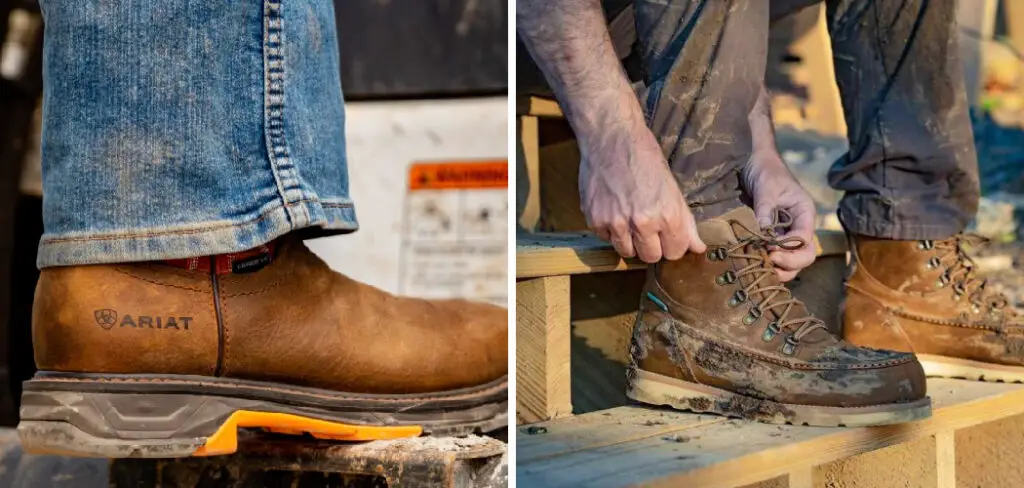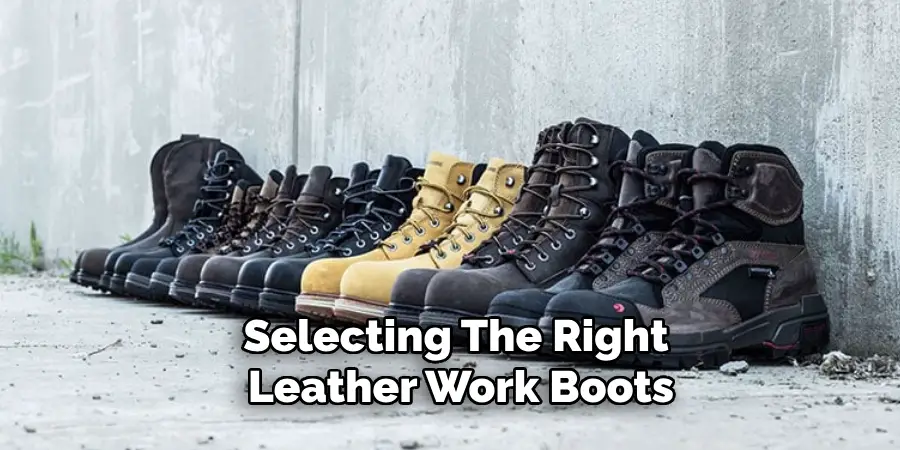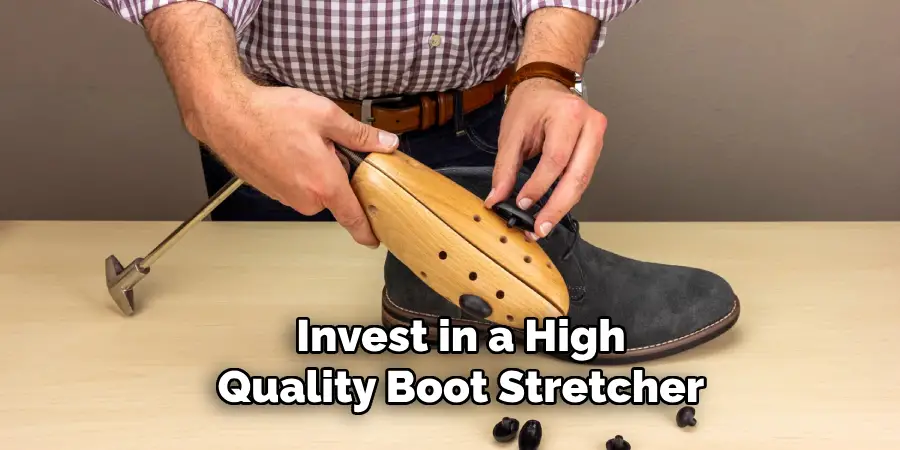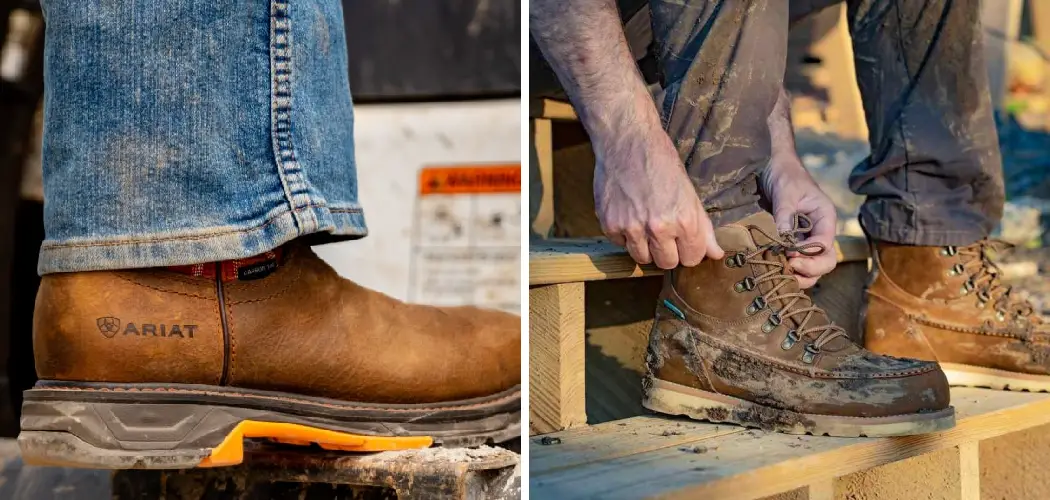Breaking in leather work boots is essential for comfort and longevity, especially when facing demanding work environments.

Whether you’re a construction worker, hiker, or simply seeking durable footwear, properly breaking in leather boots ensures they mold to your feet while preventing discomfort and blisters.
This guide will provide practical steps for how to break in leather work boots. From choosing the right size and fit to utilizing conditioning techniques and wearing them gradually, each step aims to optimize comfort without compromising the boots’ structural integrity.
By following these methods, you can ensure your leather work boots become supportive allies in your daily tasks, providing both protection and comfort throughout their lifespan. Whether it’s for professional use or outdoor adventures, mastering the art of breaking in leather work boots is crucial for maximizing performance and minimizing foot fatigue.
Importance of Breaking in Leather Work Boots
Breaking in leather work boots is not just about comfort; it is a critical process that significantly impacts both the boots’ performance and the wearer’s overall foot health.
New leather boots are often stiff and unforgiving, which can lead to painful blisters, sores, and general discomfort if worn for extended periods without proper preparation. By gradually breaking them in, you allow the leather to soften and conform to the shape of your feet, ensuring a more customized and secure fit.
Additionally, the break-in process helps maintain the structural integrity of the boots. Leather, being a natural material, becomes more pliable and resilient over time when treated correctly.
This means that well-broken-in boots are less likely to suffer from cracks or premature wear, extending their lifespan. For those working in physically demanding environments, properly broken-in boots can also improve safety by providing better grip, stability, and support, thus reducing the risk of foot fatigue and injury.
In summary, investing time in breaking in your leather work boots is essential. It not only ensures immediate and long-term comfort but also enhances the durability and effectiveness of the boots, making them reliable partners in your daily endeavors.
Choosing the Right Boots
Selecting the right leather work boots is the first and most crucial step in ensuring a comfortable and effective break-in process.

The perfect pair of boots should fit well from the moment you try them on, as a poor fit can lead to chronic discomfort and foot problems, regardless of the breaking-in techniques used. Here are some key considerations for choosing the right boots:
- Size and Fit: Always prioritize the proper size. Your boots should offer a snug fit without being too tight. There should be enough room to wiggle your toes, while the heel should remain secure and not slip excessively when walking. Trying on boots at the end of the day, when feet are typically more swollen, can help ensure a more accurate fit.
- Arch Support and Cushioning: Good arch support is essential for preventing foot fatigue, especially when standing or walking for extended periods. Look for boots with adequate cushioning and support or consider investing in high-quality insoles that can be added for additional comfort.
- Construction and Material Quality: The construction quality and materials used in the boots significantly impact their durability and ease of breaking in. Full-grain leather is often recommended for its durability and ability to mold to your feet over time. Additionally, well-constructed boots with features like welt stitching generally last longer and provide better support.
- Purpose and Environment: Consider the primary purpose and environment in which you’ll be wearing the boots. Different jobs or activities may require specific features, such as steel toes for protection, waterproofing for wet conditions, or slip-resistant soles for increased stability.
- Brand Reputation and Reviews: Research brands and read reviews to get an idea of the overall quality and user experiences. Brands known for their craftsmanship and durability often provide more reliable and comfortable options.
Choosing the right boots sets the foundation for a successful break-in process, ultimately enhancing your comfort, performance, and foot health in the long run. Investing the time and resources to find the perfect pair will pay off with boots that serve you well in various conditions and tasks.
10 Methods How to Break in Leather Work Boots
1. Choose the Right Size and Fit
Before starting the break-in process, ensure you have chosen the correct size and fit for your leather work boots. The boots should feel snug but not tight when initially trying them on. There should be enough room in the toe box to wiggle your toes comfortably. A proper fit minimizes discomfort during the break-in period and promotes better foot health in the long run.
2. Wear Thick Socks
To accelerate the break-in process, wear thick socks made of materials like wool or cotton. The socks provide additional padding and help cushion your feet from potential rubbing or friction inside the boots. The thickness of the socks also slightly stretches the leather, aiding in the molding process. Wear the socks each time you wear the boots during the break-in period.
3. Use a Boot Stretcher
Invest in a high-quality boot stretcher designed for leather footwear. A boot stretcher helps expand specific areas of the boot that may feel tight or constricting. Insert the boot stretcher into the boots overnight or for a few hours at a time, depending on the level of tightness. Gradually increase the pressure applied by the stretcher to gently stretch the leather without causing damage.

4. Apply Leather Conditioner
Conditioning the leather regularly softens and moisturizes the material, making it more pliable and less prone to cracking or stiffness.
Choose a leather conditioner specifically formulated for work boots or heavy-duty footwear. Apply a small amount of conditioner to a clean cloth and rub it into the leather in circular motions. Allow the conditioner to penetrate the leather for several hours or overnight before wiping off any excess with a dry cloth.
5. Wear Them Around the House
Begin breaking in your leather work boots by wearing them indoors for short periods, such as around the house or during light activities. Start with wearing them for an hour or two each day to gradually acclimate your feet to the boots. This allows the leather to begin molding to the shape of your feet without putting excessive strain on them.
6. Use a Blow Dryer
To target specific areas of tightness, use a blow dryer to heat the leather slightly. Put on a pair of thick socks, then wear the boots. Use the blow dryer set on low heat to warm the tight spots for a few minutes. Flex your feet and toes while the leather is warm to help stretch and shape the material. Allow the boots to cool naturally while still on your feet to maintain the shape.
7. Employ the Wet Newspaper Method
For stubborn areas that need additional stretching, use the wet newspaper method. Stuff damp newspaper into the boots, focusing on the tight areas. Allow the newspaper to sit overnight or until completely dry. As the newspaper dries, it expands, gently stretching the leather around your feet. Remove the newspaper once dry and wear the boots to check the fit.

8. Walk Short Distances Initially
When starting to wear your leather work boots outside, begin by walking short distances on flat terrain. Gradually increase the duration and distance of your walks as the boots continue to mold to your feet. Pay attention to any areas of discomfort or rubbing and adjust accordingly by using additional socks or targeted stretching methods.
9. Flex and Bend the Boots
To promote flexibility and looseness in the leather, flex and bend the boots by hand. Hold the boot firmly around the heel and toe areas, then gently flex the sole and upper back and forth. This action helps break in stiff leather and encourages natural movement while walking. Repeat this process regularly during the break-in period to maintain flexibility.

10. Be Patient and Persistent
Breaking in leather work boots is a gradual process that requires patience and persistence. Avoid rushing the process, as forcing the leather to stretch too quickly can cause damage and compromise the integrity of the boots. Wear them regularly in different conditions and terrains to allow the leather to adjust naturally to your feet. Over time, the boots will become more comfortable and conform perfectly to your foot shape.
Conclusion
Breaking in leather work boots may seem like a daunting task, but with the right approach and techniques, it can be a rewarding experience. By selecting the appropriate size and fit, using tools like boot stretchers and leather conditioners, and gradually increasing wear time, you can ensure your boots become comfortable and well-fitted.
Remember to be patient and persistent throughout the process, as rushing can lead to damage and discomfort. Investing time in properly breaking in your leather work boots will result in footwear that not only provides protection and durability but also enhances your overall foot health and performance. Thanks for reading, and we hope this has given you some inspiration on how to break in leather work boots!

